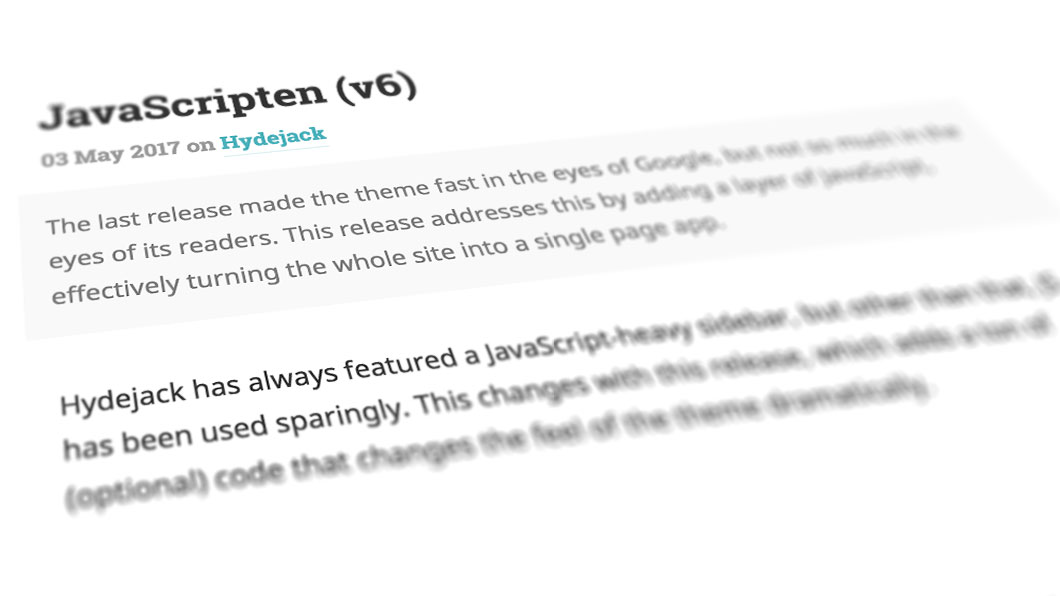Example Content II

A page showing how regular markdown content is styled in Hydejack.
There should be whitespace between paragraphs. We recommend including a README, or a file with information about your project.

A page showing how regular markdown content is styled in Hydejack.
There should be whitespace between paragraphs. We recommend including a README, or a file with information about your project.

This post introduces Hydejack’s now background image, color palette and logo.
While v7 brings an insane amount of new stuff, the most notable change is the new background image. It is no longer anti-selling the theme. The old image was a blurred version of Napoleon Bonaparte, which was just… weird. I could tell the story of how this came to be, but I’d rather show you the new and improved background image.
Hydejack v6.5 includes various quality-of-life improvements, especially when using the gem-based version of the theme.
This maintenance release includes various quality-of-life improvements, especially when using the gem-based version of the theme. These changes come in handy when using Hydejack for a quick (project-) page: The home layout, which is used when using jekyll new, is now a proper layout that displays a few posts/pages below the regular content, and it is again possible to define an author in _config.yml without setting up a _data directory (for more, see blow).
In Hydejack v6.4 I’ve added a “Other Projects” section to the bottom of each project page, making it easier for users to navigate through your collection and discover other projects.
In this release I’ve added a “Other Projects” section to the bottom of each project page, making it easier for users to navigate through your collection and discover other projects. Also, it’s now possible to display larger (data-) tables that were previously cut off (especially on mobile devices).
Hydejack v6.3 makes including third party plugins easier.
This release makes including third party plugins easier. Until now, the push state approach to loading new pages has been interfering with embedded script tags. This version changes this by simulating the sequential loading of script tags on a fresh page load.
Hydejack v6 adds a layer of JavaScript, effectively turning the whole site into a single page app.
Hydejack has always featured a JavaScript-heavy sidebar, but other than that, JS has been used sparingly. This changes with this release, which adds a ton of (optional) code that changes the feel of the theme dramatically.
Hydejack v5 dramatically increases page load speed which matters to Google and visitors with slow connections alike.
This major release increases page load speed dramatically. The page now scores roughly 90/100 on Google’s PageSpeed Insights (up from ~50) and has a high score on similar tools.
Hydejack v4 adds a lot of social media icons and introduces a new default layout. It also breaks things, hence a new major release number.
Hydejack v4 adds a lot of social media icons and introduces a new default layout. It also breaks things, hence a new major release number.
_config.yml has changedauthor: social: <platform>: <username>.disqus is now a top-level entry (moved from author).font, font_accent and google_fonts fields that are mandatory.blog layout, old style is available via blog-by-tag layout, see archive.html.Hydejack is a pretentious two-column Jekyll theme, stolen by @qwtel from Hyde. You could say it was.. hydejacked.
Unlike Hyde, Hydejack is very opinionated about how you are going to use it.
Features include:
Hyde is a brazen two-column Jekyll theme that pairs a prominent sidebar with uncomplicated content.
Hyde is a brazen two-column Jekyll theme that pairs a prominent sidebar with uncomplicated content. It’s based on Poole, the Jekyll butler.